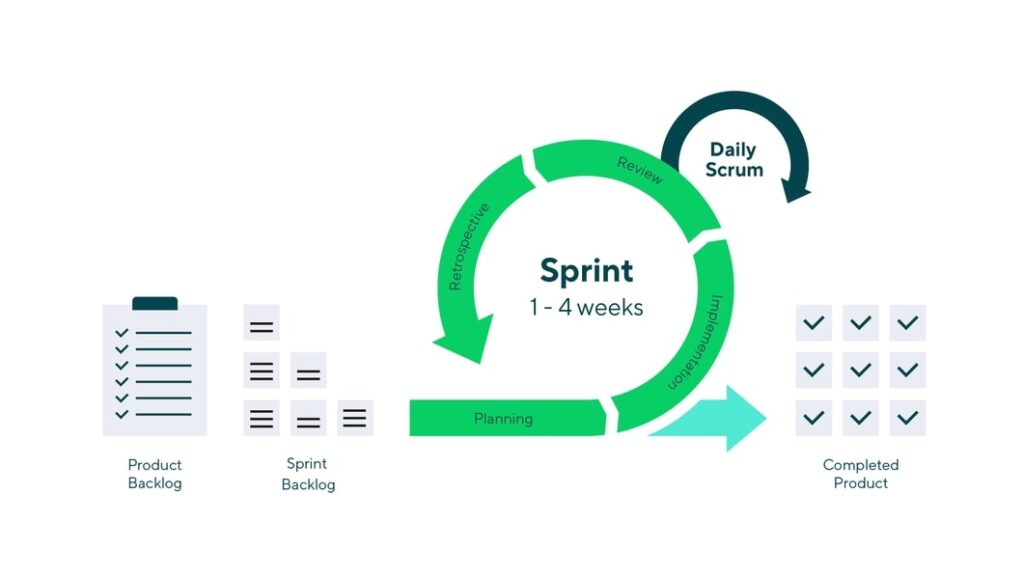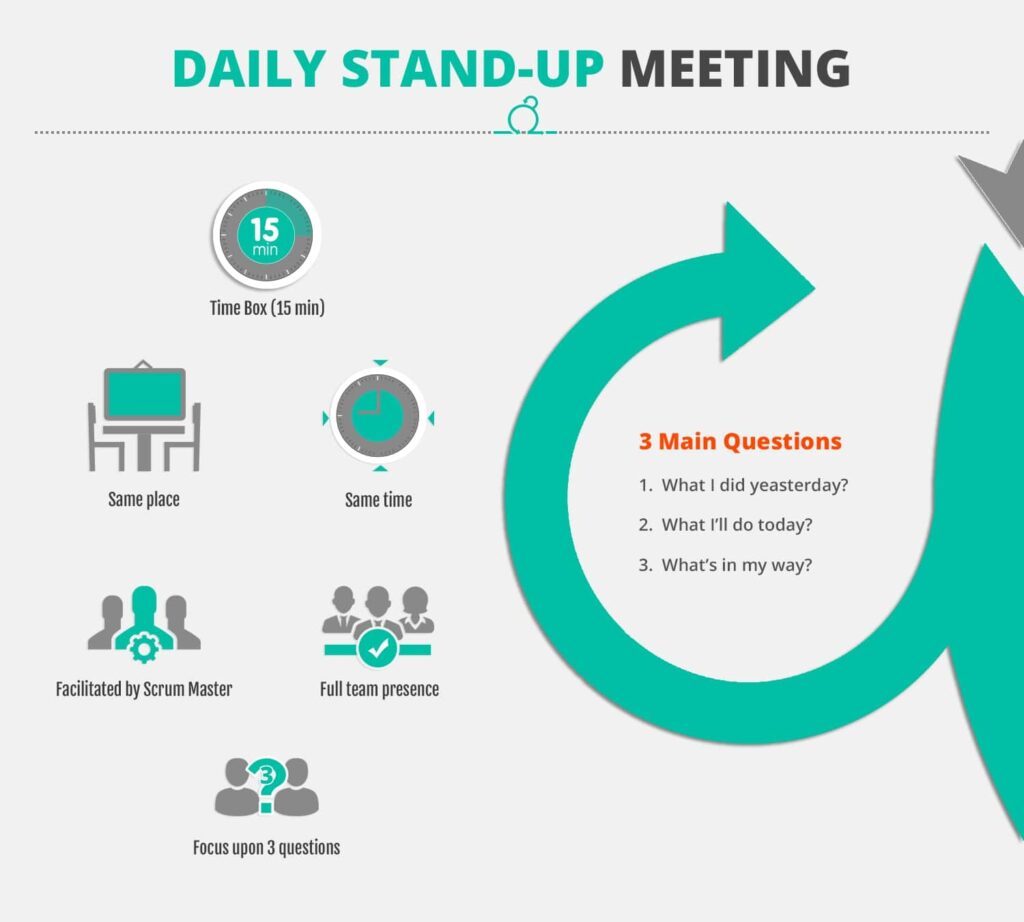Curious to learn how to build a winning agile marketing team?
Then you’ve come to the right place.
The agile marketing team is a general marketing team that adopts a tactical marketing approach using agile principles. This allows marketing teams to invest their collective efforts in high-value projects.
Agile marketing teams follow the agile approach of creating sprints to complete complex projects by prioritizing critical tasks. Agile plays a vital role in modern marketing as marketing teams analyze data and gain insights on what is working as well as which project is more valuable to dedicate their efforts to. They also identify various indicators to determine ways for continuous improvement based on failures of previous approaches.
That begs the question: how do they implement Agile in marketing?
Discover the answers in this post as we discuss different aspects of Agile marketing and explore existing implementations in the industry today.
Let’s dive right into the discussion.
Best Practices to Build Agile Marketing Teams
Most recent findings highlight that agile marketing practices like daily stand-ups, user stories, sprints, tracking projects, and teamwork are the essence of a successful agile marketing team. But each marketing department must determine the Agile format that suits their operations best.
That said, there are a few standard practices that use to make marketing teams more agile-centric.
Sprints
Sprint determines the fixed duration for a team to complete their project. The standard range of these sprints is two to six weeks. But these intervals do not change after they begin.

Credits: Wrike
While it works for smaller or medium-size projects, there are complex projects with more deliverables that do not fit into a single sprint. In such a case, you must break these initiatives into smaller deliverables achievable within different sprints.
Daily Stand-Ups
As a marketing manager, you must conduct daily stand-ups to create short-term strategies for teams to manage various moving parts within a marketing environment.

Credits: Pinterest
Today, marketers consider daily stand-ups a popular and effective agile practice. These meetings entail a minimum of 15 minutes daily to touch upon several key points on the progress, the approaches taken so far, and identifying problems encountered during the process.
Tracking Progress with the Board Sessions
Whether you use a whiteboard session or a digital board, keeping track of the project’s progress is essential. Unlike software teams, agile marketers require a solid structure for their workflows. There are digital solutions such as the Kanban board that are popular in agile marketing as it helps track the progress of the sprints with access for all the team members. Features like pending work items or color codes indicate the workflows’ progress and allow for better visualization to highlight areas requiring teams to speed up their marketing processes.
Promote Teamwork
Traditional marketing approaches fail due to the lack of teamwork. Therefore, promoting teamwork while considering different perspectives ensures complete collaboration within the agile framework.
User Stories
User stories are familiar with software development. But in recent years, a growing trend in the agile marketing ecosystem is to incorporate user stories. These user stories promote marketing agility and tackle problems lacking alignment of strategic and internal goals. At the strategic level, these user stories encompass a wide range of activities, from planning each quarter to refining operations by diving into granular details for the execution teams. However, internal team stories provide a pathway with actionable tasks for fulfilling the needs of the internal teams instead of customer-oriented objectives.
Backlogs
While there are multiple ways to achieve the marketing objective, a backlog helps review the progress with a different perspective by prioritizing items that require significant effort. Marketing teams implement backlogs to speed up decision-making and deliver high-value work to meet the marketing goals of various teams.
Retrospectives
Retrospectives are discussions that determine what went right or wrong during the workflow. The key objective is to reflect on the work progress and enable continuous improvement. Most agile marketing works revolve around retrospectives as they consider the best and worst practices to identify more innovative and creative approaches that solve existing challenges and meet the project goals.
Structure of an Agile Marketing Team
Apart from practicing agile marketing, being aware of the specific structure of the agile marketing teams is critical for its success. It also helps define the roles according to the specialists in marketing fields. In practice, the structure of an agile marketing team is specific to an organization and the resources at its disposal. Here is a breakdown of some of the leadership roles that arise when creating agile marketing teams.
Agile Marketing Team Lead
These individuals focus on meeting the team objectives and helping to get the job done. They are also responsible for assigning tasks based on the specialty and experience of a team member.
Marketing Owner
Much like the Product Owners in Agile product development, a marketing owner’s role is to bridge the gap between different marketing teams, cross-functional teams, and stakeholders. Apart from that, marketing owners are responsible for meeting the team’s priorities, accepting or rejecting the current outcome, and preventing unnecessary interruptions for the marketing campaigns and projects.
Scrum Master
A scrum master in a marketing team is a senior member who facilitates communication and coordination between teams and eliminates any obstacles.
Agile Coach
Many marketers are still new to the role of an agile coach. But their primary role is to facilitate team dynamics, build the agile mindset and help improve the performance of team members. In general, agile coaches are instrumental in:
- Identifying the cause of disruptions between teams with cross-functional dependencies.
- Reviewing the workflows and providing recommendations for future improvements.
- Helping in the seamless integration of new team members into the agile marketing process.
- Creating agreements between agile marketing teams and other non-agile departments in the organization.
- Helping in the transition from traditional marketing approaches to agile techniques.
Agile Marketing Director
In agile marketing processes, these roles are specific to the leaders in the organization that maintain the balance between traditional positions of the enterprise while facilitating agile responsibilities for the team’s success and evaluating performance.
Agile Marketing Teams: Key Takeaways
Knowing how to train marketing teams in Agile is challenging.
However, it’s far from impossible.
If your organization is stable and is searching for a methodology to gain a significant competitive edge in the market, then opting for agile marketing approaches is appropriate. Then again, if specific organizations have continuous interruptions that derail the progress, then it is best to consider restructuring the process and identify the end goal of your marketing approach before implementing agile methodologies.
As long as there is a solid understanding of the team dynamics and confidence of the top-level management in their marketing teams to deliver high-quality work, then agile is the right way to proceed.